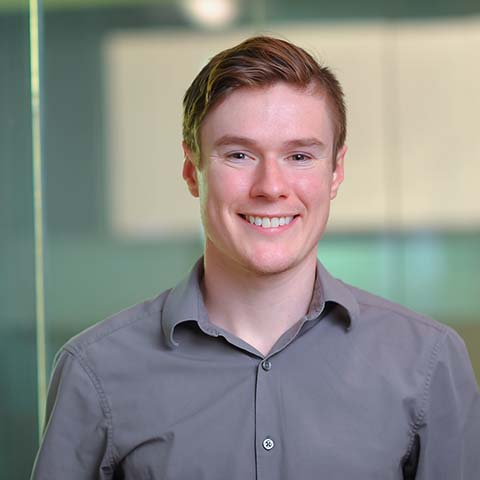Education
- Ph.D., Mechanical Engineering, Stanford University | 2020
- M.S., Mechanical Engineering, Stanford University | 2018
- B.S., Mechanical Engineering, Johns Hopkins University | 2016
Research Interests
Our group studies the flow physics of Earth’s atmosphere and the modeling, optimization, and control of renewable energy generation systems. This work is focused at the intersection of fluid mechanics, weather and climate modeling, uncertainty quantification, and optimization and control with an emphasis on renewable energy systems. We use synergistic approaches including simulations, laboratory and field experiments, and modeling to understand the operation of renewable energy systems, with the goal of improving the efficiency, predictability, and reliability of low-carbon energy generation. We are pursuing two coupled research themes:
- Modeling complex environment-energy system interactions through the use of simulations and experiments
- Leveraging the developed models in full-scale field experiments or case studies to improve the operation and integration of low-carbon generation
Awards and Honors
- Young Investigator Program (YIP) award from the Office of Naval Research (ONR), 2024
- MIT CEE Maseeh Excellence in Teaching Award, 2024
- Stanford Graduate Fellowship in Science & Engineering, 2016
- National Science Foundation (NSF) Graduate Fellowship, 2016
- Tau Beta Pi Scholarship Award, 2015
Teaching Interests
- 1.086/1.861: Physics and Engineering of Renewable Energy Systems
- 1.65: Atmospheric Boundary Layer Flows and Wind Energy
Selected Publications
- Heck K.S. and Howland M.F., 2025. Coriolis effects on wind turbine wakes across neutral atmospheric boundary layer regimes. Journal of Fluid Mechanics, 1008:A7. https://doi.org/10.1017/jfm.2025.35
- Qiu, L., Khorramfar, R., Amin, S. and Howland, M.F., 2024. Decarbonized energy system planning with high-resolution spatial representation of renewables lowers cost. Cell Reports Sustainability, 1(12). https://doi.org/10.1016/j.crsus.2024.100263
- Klemmer, K.S. and Howland, M.F., 2024. Momentum deficit and wake-added turbulence kinetic energy budgets in the stratified atmospheric boundary layer. Physical Review Fluids, 9(11), p.114607. https://doi.org/10.1103/PhysRevFluids.9.114607
- Mata, S.A., Pena Martínez, J.J., Bas Quesada, J., Palou Larrañaga, F., Yadav, N., Chawla, J.S., Sivaram, V. and Howland, M.F., 2024. Modeling the effect of wind speed and direction shear on utility‐scale wind turbine power production. Wind Energy, 27(9), pp.873-899. https://doi.org/10.1002/we.2917
- Liew, J., Heck, K.S. and Howland, M.F., 2024. Unified momentum model for rotor aerodynamics across operating regimes. Nature Communications, 15(1), p.6658. https://doi.org/10.1038/s41467-024-50756-5
- Heck, K.S., Johlas, H.M. and Howland, M.F., 2023. Modelling the induction, thrust and power of a yaw-misaligned actuator disk. Journal of Fluid Mechanics, 959, p.A9. https://doi.org/10.1017/jfm.2023.129
- Howland, M.F., Quesada, J.B., Martínez, J.J.P., Larrañaga, F.P., Yadav, N., Chawla, J.S., Sivaram, V. and Dabiri, J.O., 2022. Collective wind farm operation based on a predictive model increases utility-scale energy production. Nature Energy, 7(9), pp.818-827. https://doi.org/10.1038/s41560-022-01085-8
- Howland, M.F., Dunbar, O.R. and Schneider, T., 2022. Parameter uncertainty quantification in an idealized GCM with a seasonal cycle. Journal of Advances in Modeling Earth Systems, 14(3), p.e2021MS002735. https://doi.org/10.1029/2021MS002735
- Howland, M.F., González, C.M., Martínez, J.J.P., Quesada, J.B., Larranaga, F.P., Yadav, N.K., Chawla, J.S. and Dabiri, J.O., 2020. Influence of atmospheric conditions on the power production of utility-scale wind turbines in yaw misalignment. Journal of Renewable and Sustainable Energy, 12(6). https://doi.org/10.1063/5.0023746
- Howland, M.F., Lele, S.K. and Dabiri, J.O., 2019. Wind farm power optimization through wake steering. Proceedings of the National Academy of Sciences, 116(29), pp.14495-14500. https://doi.org/10.1073/pnas.1903680116
- Howland, M.F., Bossuyt, J., Martínez-Tossas, L.A., Meyers, J. and Meneveau, C., 2016. Wake structure in actuator disk models of wind turbines in yaw under uniform inflow conditions. Journal of Renewable and Sustainable Energy, 8(4). https://doi.org/10.1063/1.4955091
